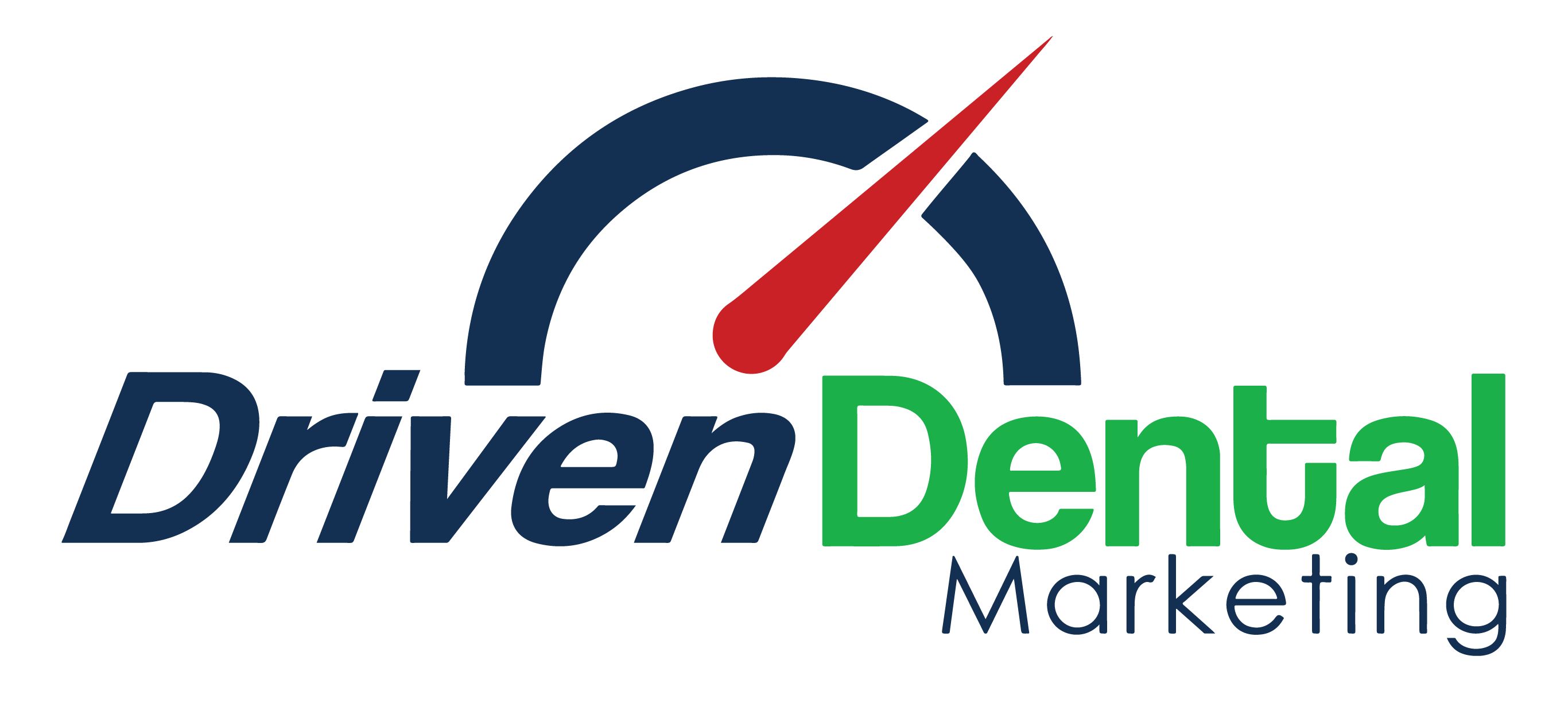Coronavirus impacted few industries more than dental practices. Retail establishments and restaurants could shift to curbside or takeout. Office workers could work from home. But dental practices needed to close completely or do only emergency dentistry.
Many practices closed for weeks—some for months. Others shifted their marketing strategies to intentionally building emergency dentistry, through proven emergency dentistry campaigns. Those practices succeeded by increasing their emergency patient pool exponentially. Some practices filled their schedules using only emergency dentistry patients from beyond their patient list.
While the pandemic is disruptive, a bigger and more permanent shift in consumer behavior occurred that will impact dental practices even more than having to shutter their doors for a few weeks or months. The shift has been discussed in other industries, including in this article by mfour Mobile Research. The observations are aligned with Abraham Maslow’s hierarchy of needs, which discusses what people prioritize, from basic, physiological needs to self-actualization.
This shift in consumer behavior will impact dental practices for years. The practices that adjust will thrive. The ones who don’t will struggle. Here’s more about the shift and how you can position your practice to thrive.
The new dental patient buying process.
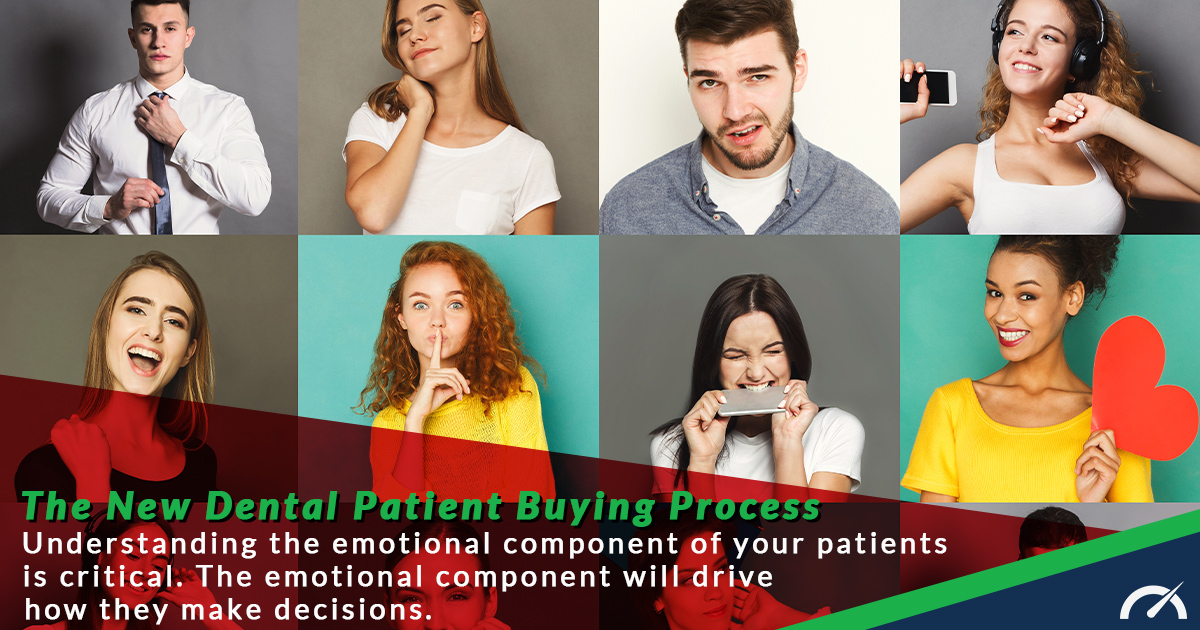
Covid-19 fractured the buying process into four phases, each of which relates to emotional concerns of consumers:
- Stage 1. Safety-Concerned
- Stage 2. Loyalty-Fractured
- Stage 3. Habit-Shifting
- Stage 4. New-Expectations
From a practice perspective, understanding the emotional component of your patients is critical. The emotional component will drive how they make decisions.
Thus, it should also drive your marketing, patient experience, and case presentation methods. You need to understand what’s behind the emotional component and what positive motivation is behind the primary emotion.
That understanding will help you make deeper connections with patients and help them move forward with the care they need to achieve optimal oral health. Here is more about the emotional elements of each of the four stages of post-COVID-19 consumer behavior shifts.
Stage 1: Safety-Concerned Consumers
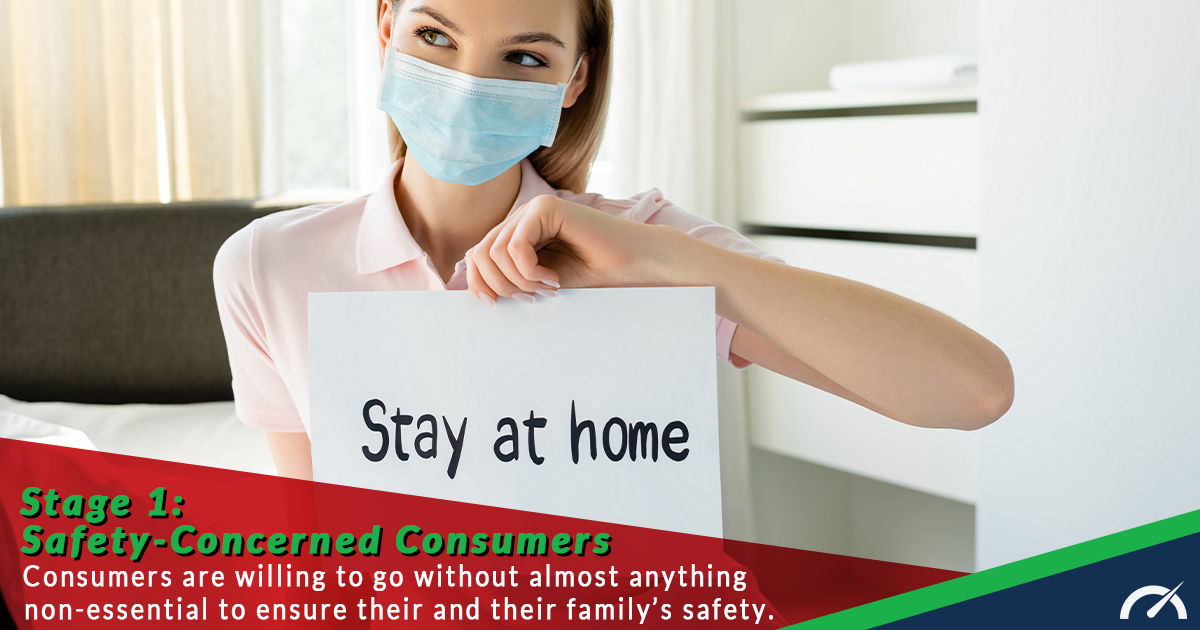
During Stage 1, consumers are concerned about their safety over everything else. They are willing to go without almost anything non-essential to ensure their and their family’s safety.
On a macro-scale, much of America became safety-concerned consumers in March and April 2020. They were focused almost completely on safety, stayed inside their homes, and locked down. Routine cleanings will not happen, even if permitted by law. They will delay almost any dental procedure other than emergency dentistry.
If you believe your area is full of safety-concerned consumers, emergency dentistry campaigns are your best bet for filling your schedule.
STOP GENERATING LEADS, GET PATIENTS INSTEAD
Stop chasing unqualified leads and wasting your valuable chairtime. Learn how to fill your operatories with patients who are pre-qualified and serious about moving forward with your high-value treatment.
Stage 2: Loyalty-Fractured Consumers
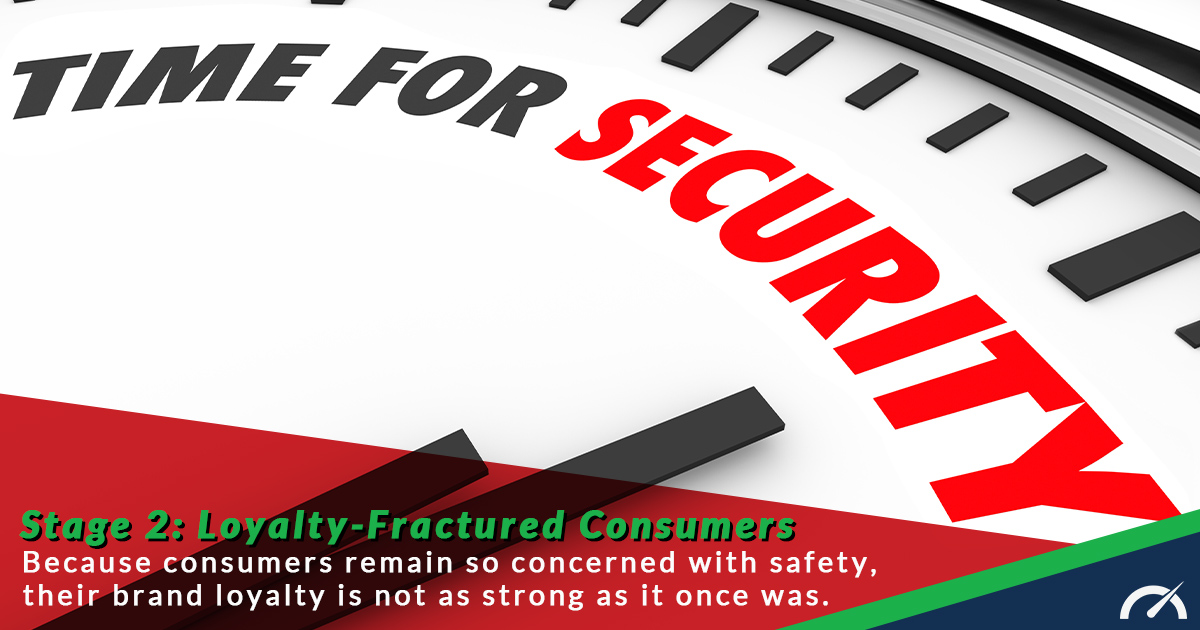
During Stage 2, consumers remain concerned about their safety but are starting to venture out of their homes. They are more willing to move forward with important but not essential procedures. But because they remain so concerned with safety, their brand loyalty is not as strong as it once was. That works both ways. Your patients will be less loyal, too. Adjusting your practice will be critical to your ability to retain patients and add new ones as patients progress to Stage 2.
Marketing emergency dentistry remains your best bet for filling your schedule with loyalty-fractured consumers. Differentiate yourself by reimagining your processes to make safety a priority. Adding virtual consultations to your process will help you make deeper connections with patients in Stage 2.
Stage 3: Habit-Shifting
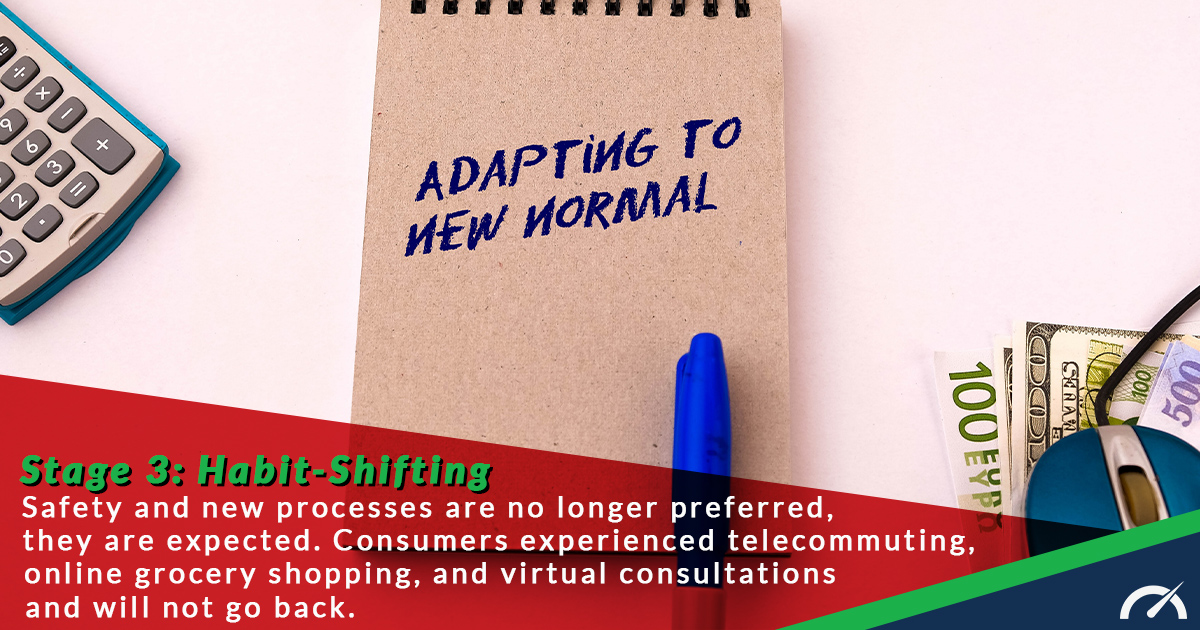
During Stage 3, consumers evolve more permanently. Stages 1 and 2 broke long-held habits. Safety and new processes are no longer preferred, they are expected. They experienced telecommuting, online grocery shopping, and virtual consultations and will not go back.
If your practice does not adjust, patients will find one that will, especially when it comes to virtual consults. Consumers no longer want to commute if they don’t have to. They don’t want to take time off work if they don’t have to. They are comfortable doing as much as they can with a virtual consultation. Their habits have shifted. When the bulk of people in your community enter Stage 3, you will need to adjust to their new habits to make being your patient fit into their new way of living.
In addition to emergency dentistry, your marketing should address new conveniences and safety protocols for patients in Stage 3.
Stage 4: New Expectations
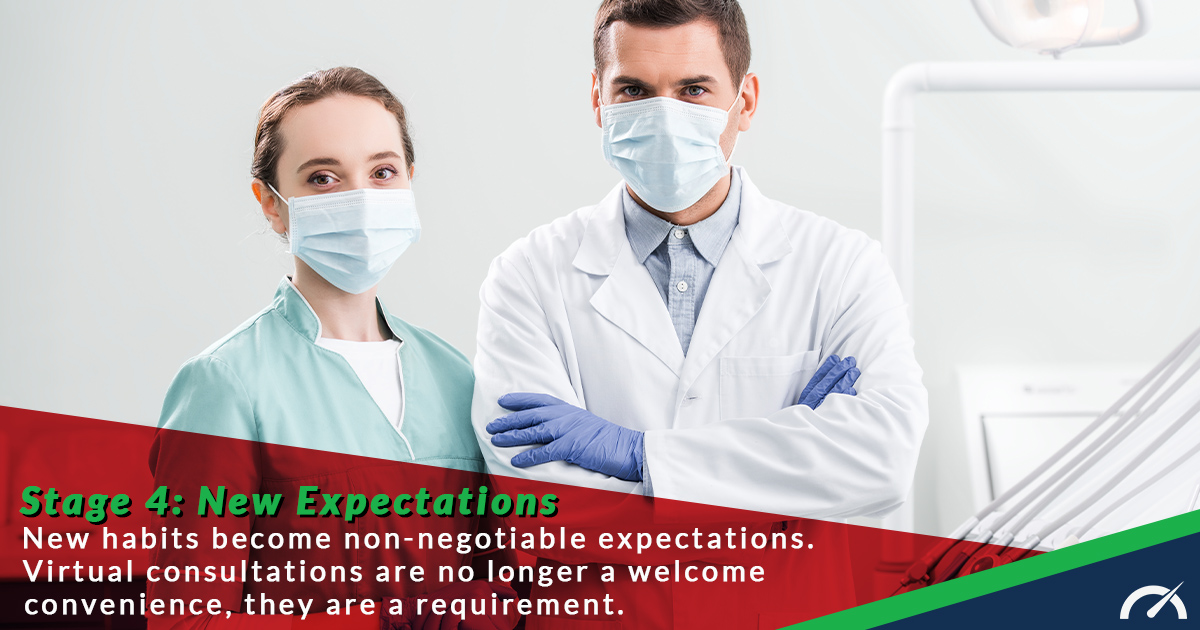
When people enter Stage 4, their new habits become non-negotiable expectations. Virtual consultations are no longer a welcome convenience. In Stage 4, they are a requirement because people fractured their loyalty in Stage 2 and shifted their habits in Stage 3. Once people get to Stage 4, they will find the dentist that matches their new expectations.
Stage 4 patients expect your practice to have made changes to your processes to make being your patient more convenient and safe. If not, they will find another one. Because this is a major shift to them, they tend to be the most vocal and enthusiastic patients. They will tell everyone they know about their positive experience and encourage others to become your patient.
Like in Stage 3, emergency dentistry campaigns remain effective in Stage 4. Additionally, convenience, safety, and your commitment to being the best practice for the “new normal” are effective for patients in Stage 4.
Are you adjusting to the new consumer buying patterns, post Covid-19?
Consumer behavior permanently shifted in early 2020. Safety and convenience became primary concerns and brand loyalty became fractured. Practices that adjust to the new buying patterns will have one of the greatest opportunities to find an influx of new patients. Those who don’t could be at risk of losing their best patients to practices who do.
If you want to find out how other offices are getting in front of new emergency and potential implant patients within a matter of days, and find out how we can pre-qualify them for you so they are ready to say yes by the time they are in your chair, book a strategy call before we are full.
